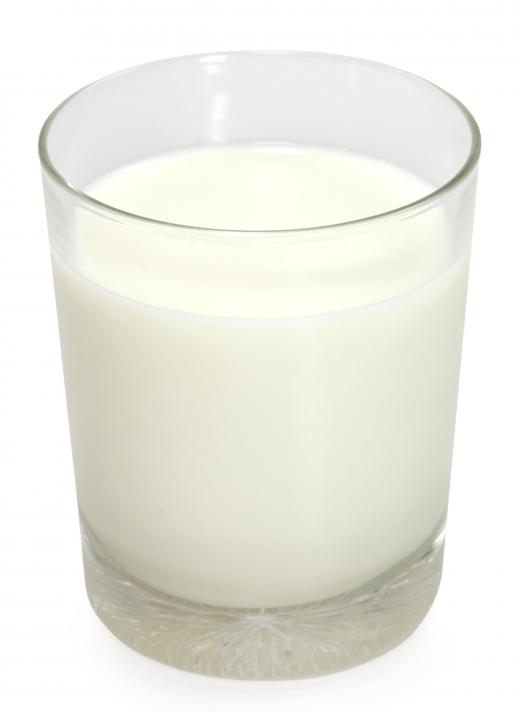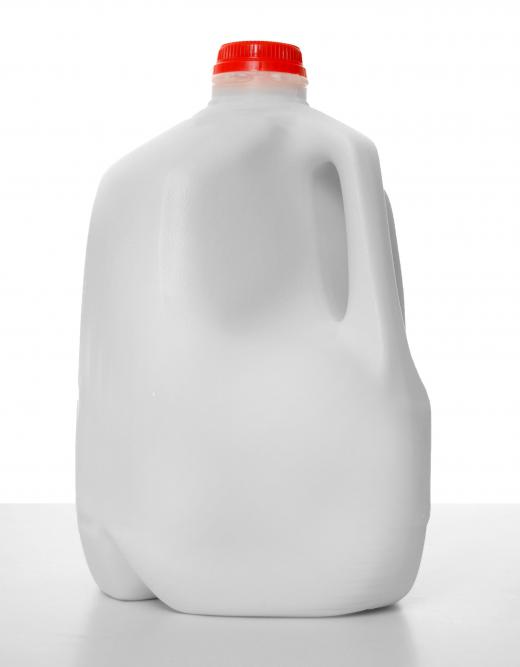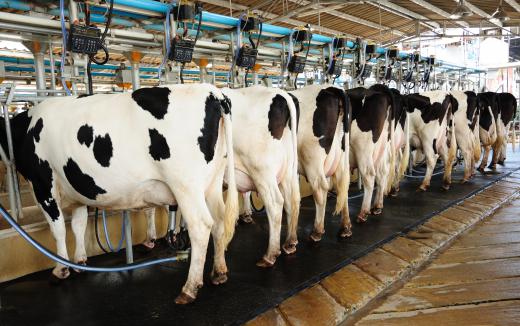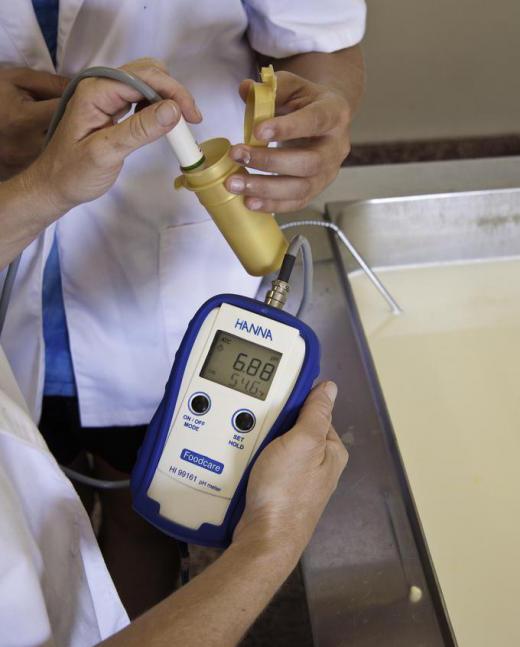Pasteurized milk is milk which has been heat-treated to kill pathogens which cause disease. Not all pathogens are removed during the pasteurization process, so pasteurized milk is not 100% sterile, but many people consider it to be safer to drink than raw milk which has not been pasteurized at all. The bulk of the milk sold in commercial grocery stores is pasteurized, and much of it is also homogenized to prevent the cream from separating.
The pasteurization process is named for Louis Pasteur, a noted French microbiologist. Pasteur made a number of notable discoveries in the field of microbiology, developing techniques which are still used today to reduce the risk of disease. In 1862, he performed early pasteurization tests, determined to render milk safe to drink, and the practice was adopted very quickly. Before pasteurization, improperly handled and stored milk caused widespread disease, especially in urban areas, where several unrefrigerated days might elapse between the cow and the end consumer.

There are several different pasteurization techniques which can be used to make pasteurized milk. The goal of pasteurization is to render the milk safe to drink without curdling or coagulating it, and without altering the flavor substantially, although people who are accustomed to drinking unpasteurized milk may find the pasteurized kind has an “off” flavor.

In high temperature/short time (HTST) pasteurization, the milk is brought to a temperature of 161 degrees Fahrenheit (71.7 degrees Celsius) and held there for 15 to 30 seconds before being rapidly cooled and packaged. Double pasteurization splits the process up into two segments, and is not recognized as a legal pasteurization method by some governments. Extended shelf life (ESL) milk is pasteurized at a slightly lower temperature and passed through a special filter to remove microbes. Ultra high temperature (UHT) pasteurization involves bringing the milk to 250 degrees Fahrenheit (138 degrees Celsius) for less than a second, while batch pasteurization is performed at a very low temperature, with the milk being held to temperature for 30 minutes before being cooled.

Even after pasteurization, milk is not totally stable. It will go bad within two to three weeks under refrigeration, with the exception of UHT milk, which can be held at room temperature in aseptic packaging for up to three months. Pasteurization also doesn't eliminate the risk of contamination along the supply line, as for instance in the case of pasteurized milk which is pumped through contaminated piping, and it doesn't eliminate heat-resistant organisms, although it does get rid of many common pathogens.

The benefit of pasteurization is that it renders milk much safer to drink. However, it also destroys some of the enzymes present in the milk, including enzymes which make milk easier to digest. It also alters the flavor of the milk, although people who are accustomed to milk that has been pasteurized may not be aware of the difference between fresh raw milk and pasteurized milk. As a result of these drawbacks, some people prefer raw milk, despite its dangers.
Ever since she began contributing to the site several years ago, Mary has embraced the exciting challenge of being a About Mechanics researcher and writer. Mary has a liberal arts degree from Goddard College and spends her free time reading, cooking, and exploring the great outdoors.

